Kingdom Plantae Family Fabaceae Scientific name Caesalpinia spinosa Rank Species | Order Fabales Genus Caesalpinia Higher classification Caesalpinia | |
 | ||
Similar Caesalpinia, Legumes, Caesalpinia coriaria, Adesmia, Prosopis chilensis | ||
Caesalpinia spinosa (Molina) Kuntze, commonly known as tara (Quechua), is a small leguminous tree or thorny shrub native to Peru. C. spinosa is cultivated as a source of tannins based on a galloylated quinic acid structure. This chemical structure has been confirmed also by LC-MS. It is also grown as an ornamental plant because of its large colorful flowers and pods.
Contents

Names and taxonomy
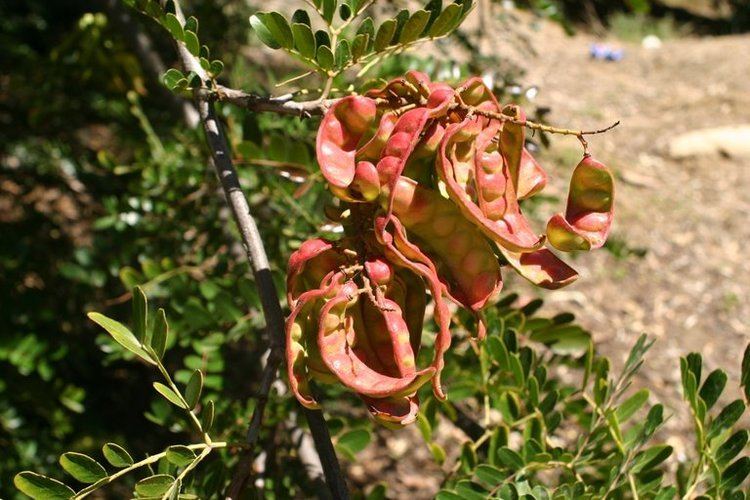
Synonyms: Poinciana spinosa MOL., Caesalpinia pectinata CAV., C. tara, C. tinctoria HBK, Coulteria tinctoria HBK, Tara spinosa, Tara tinctoria. Common names: Spiny holdback; tara, taya, algarroba tanino (Peru).
C. spinosa is in the Fabaceae family, depending on the classification system, the Caesalpinioideae subfamily, and Caesalpinieae tribe.
Description
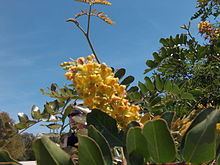
C. spinosa typically grows 2–5 m tall; its bark is dark gray with scattered prickles and hairy twigs. Leaves are alternate, evergreen, lacking stipules, bipinnate, and lacking petiolar and rachis glands. Leaves consist of 3-10 pairs of primary leaflets under 8 cm in length, and 5-7 pairs of subsessile elliptic secondary leaflets, each about 1.5–4 cm long. Inflorescences are 15–20 cm long terminal racemes, many flowered and covered in tiny hairs. Flowers are yellow to orange with 6-7mm petals; the lowest sepal is boat-shaped with many long marginal teeth; stamens are yellow, irregular in length and barely protruding. The fruit is a flat, oblong indehiscent pod, about 6–12 cm long and 2.5 cm wide, containing 4-7 round black seeds, and will redden when mature.
Distribution and habitat
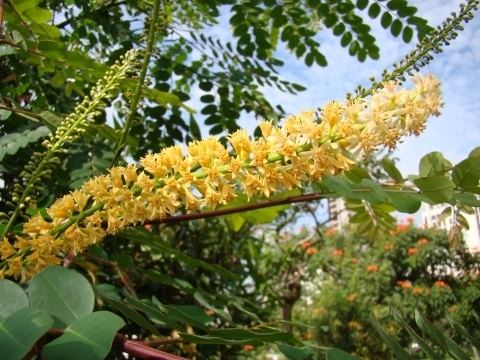
C. spinosa is native to Peru and can be found growing throughout northern, western and southern South America, from Venezuela to Argentina. It has been introduced in drier parts of Asia, the Middle East and Africa and has become naturalized in California. C. spinosa grows in the nearly rainless lomas or fog oases of the Peruvian coastal desert.
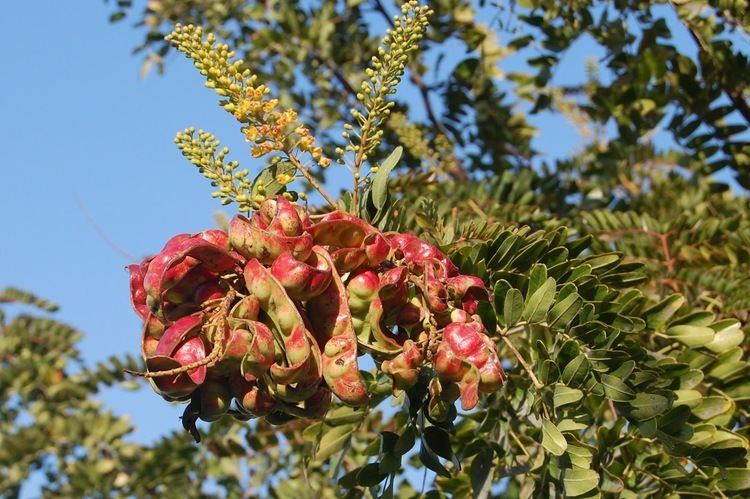
Generally resistant to most pathogens and pests, it will grow between 0 and 3,000 meters above sea level, tolerates dry climates and poor soils including those high in sand and rocks. To propagate, seeds must be scarified (pre-treated to break physical dormancy), and young plants should be transplanted to the field at 40 cm in height; trees begin to produce after 4–5 years. Mature pods are usually harvested by hand and typically sun dried before processing. If well irrigated, trees can continue to produce for another 80 years, though their highest production is between 15 and 65 years of age.
Uses
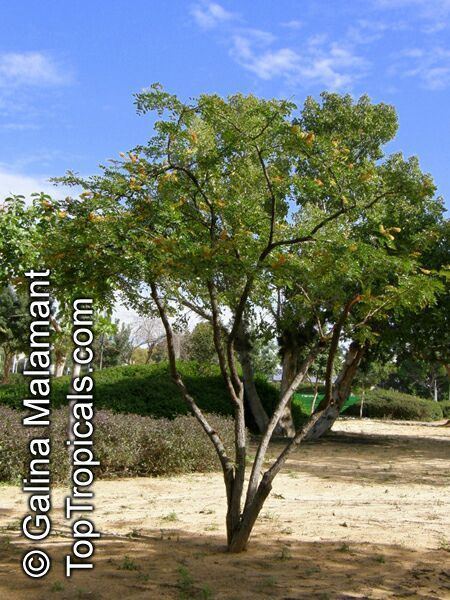
C. spinosa pods are an excellent source of environmentally friendly tannins (tara tannins) most commonly used in the manufacture of automotive and furniture leathers. This growing industry is developing around their production in Peru. Some producers have their own plantations to guarantee constant quality. Tara tannin derivatives are being proposed as antifouling against marine organisms that can grow on ship hulls. Those tannins are of the hydrolysable type. Gallic acid is the main constituent of tara tannins (53%) and can be easily isolated by alkaline hydrolysis of the plant extract. Quinic acid is also a constituent of the tara tannins. Its tannines are colourless or light making them suitable a pre-mordant in the dyeing of cotton and other cellulose fibres Donna Brown, Diane de Souza, and Catharine Ellis: Mordanting Cotton and Cellulose—Successful Methods, Turkey Red Journal 19:1 (2014).

Tara gum is a white or beige, nearly odorless powder that is produced by separating and grinding the endosperm of C. spinosa seeds. Tara gum consists of a linear main chain of (1-4)-ß-D-mannopyranose units attached by (1-6) linkages with α-D-galactopyranose units. The major component of the gum is a galactomannan polymer similar to the main components of guar and locust bean gums that are used widely in the food industry. The ratio of mannose to galactose in Tara gum is 3:1. Tara gum has been deemed safe for human consumption as a food additive. Tara gum is used as a thickening agent and stabilizer in a number of food applications. A solution of tara gum is less viscous than a guar gum solution of the same concentration, but more viscous than a solution of locust bean gum. Generally tara gum presents a viscosity of around 5,500 cps (1% aqueous solution). Furthermore, tara gum shows an intermediate acid stability between locust bean gum and guar gum. It resists the depolymerisation effect of organic acids down to a pH of 3.5. This gum is also stable to high temperature heat treatment, up to 145 °C in a continuous process plant. Blends of tara with modified and unmodified starches can be produced which have enhanced stabilization and emulsification properties, and these are used in the preparation of convenience foods, such as ice cream.
Medicinal uses in Peru include gargling infusions of the pods for inflamed tonsils or washing wounds; it is also used for fevers, colds and stomach aches. The tree can also be a source of lumber and firewood, and as a live fence. Water from boiled dried pods is also used to kill fleas and other insects. The seeds can be used to produce black dye while dark blue dye can be obtained from the roots.
